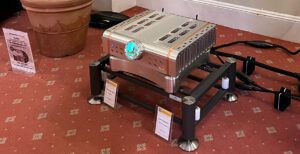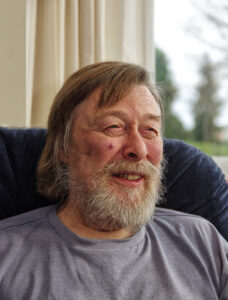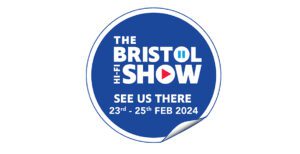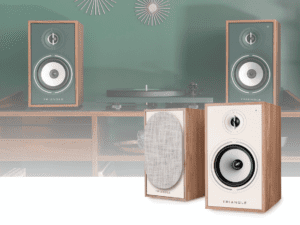
A couple of months back, you may well have enjoyed Part I of our interview with leading mastering engineer Simon Heyworth, conducted at his beautiful state-of-the-art Super Audio Mastering (SAM) facility in Dartmoor, Devon.
In the second part of our tête-à-tête – and once again with a little help from Simon’s fellow SAM engineer Andy Miles – Heyworth continues to demystify the complex creative mastering process while also giving you audiophiles some insight into what makes the set-up at his facility, built inside a 19th century granite-walled threshing barn or ‘roundhouse’, sound so incredible.
MF: Simon, what was mastering like when you first became involved in the process back in the 1970s?
SH: When I was mixing and going to the vinyl cut as a youngster, I learnt that producers and engineers used to mix records really, really well and as accurately as possible. The A-side and the B-side were all done and all you really had to do to cut the record was to add maybe half a dB at 10K on track three, adjust the bass here and there and do some hi-frequency limiting or something minor like that. It was a work of art, it was cut together as an album and it was mixed in such a way that it was finished and there was no more to do aside from getting the music onto vinyl. In those days, it was a five hour operation or less. Of course, sometimes it was more complex and it was all hands on deck with different EQ’s for each track and so on. You would then cut an acetate test disc, you went home and you listened to it and, if you liked what you heard, you’d ring up and say, ‘Okay, go for the cut’, and it would then go off to be pressed. You would receive a test pressing, which you also needed to approve. For vinyl, that part of the process has not changed. Cutting or mastering was a job done in a very short space of time because a lot of time had been spent on the mixing and on getting everything absolutely right. The main difference now is that people send you individual tracks that are not cut together. They’ve been mixed but they haven’t – a lot of the time – even got a running order. We might have to do an awful lot more to it and our work can be really cut out adding EQ and compression to make it all more present and then dealing with the loudness aspects of music. But, of course, this is not true of every album project. Sometimes it can be very simple and the work is wonderfully crafted and so the trick is to make it just that bit better and not mess it up. I recently mastered a song for a Dutch artist called Glennis Grace and it was a case of just taking it to that next level where you go, ‘Wow, that’s a great performance, recording and song!’ I like to make it feel like it is just in front of the speakers. We call it ‘incremental betterment’, a phrase coined by Robert Fripp with whom we work.
MF: In the first part of this interview, you were explaining the use of compression, limiting and EQ during the mastering process. How important would you say digital tools are?
SH: Digital EQ can be very useful at the beginning, in the middle or at the end of the process. It is amazing, real advances have been made and it can be a little bit more precise. You can change the curves a lot more accurately and it helps seeing them on a screen. Some of the higher resolution digital equalisers like the Massenburg DesignWorks hi-res EQ or the Weiss EQ1-MK2 are just wonderful for very fine tuning. There’s no doubt about it. They do what they say on the tin and they do it really well. Some of the normalising software that’s around like the TC Electronics dynamics packages and Sonnox are very effective and very, very useful. There are some incredibly powerful tools in the digital world these days and – they’re not only useful – they sound really good too. The digital world has really come to a point where it’s absolutely incredible. Some of the analogue modelling in the UAD Software is extraordinary. It’s almost a challenge for me to master an album ‘in the box’ and make it sound as good, if not better, than doing it analogue and I’m intrigued by that as a way forward. As yet, we still tend to go towards analogue signal paths but it’s usually a mixture of both. The analogue world can still add ‘humanity’ to digitally recorded music.

MF: You also mentioned how you can have occasional ‘moments of clarity’ while experimenting with EQ in the signal path. Could you give us an example of this?
SH: Yes, it happened recently actually. I was working on one of Imogen Heap’s songs [from her forthcoming album] and I just knew I should have another go at it. I thought, ‘It’s not 1.8K, it’s something a bit higher than that but I couldn’t quite find it.’ I wanted to get some space round the vocal and I wanted to separate the sound. Then, suddenly it was there and you’re going, ‘Wow, there it is!’ Suddenly, everything was kind of slightly separated and yet really clear and the bass frequencies were not masked by other frequencies. I said, ‘I’ve got it. That’s it!’ and when that happens, I print it immediately. I hit the record button and immortalise it while it’s there otherwise you could mess it up by changing something else. It’s just following your nose really. It’s hard to describe how it happens. The co-ordination between the brain and the ear and what the brain tells you about what the ear hears is a most extraordinary phenomenon… and then how you react to that, and how you change something to accommodate what the brain is trying to tell you… it’s just amazing.
MF: What is your take on the whole analogue vs digital recording debate?
SH: It depends on the music and it depends what you’re after but, most definitely, it can help to record to analogue tape in the mix-down. Classical music or orchestral recordings, however, tend to sound pretty awesome these days as pure digital recordings and there are a few great exponents of the art. I have a lot of respect for those that do this type of work.
AM: We mastered a record for an American artist Tyler Burns, and it was done with really nice ATR tape and it had an incredible bottom end. I think he was working at 30 ips [inches per second]. It sounded absolutely fantastic. He sent us the tapes and the digital audio files, but we mastered it from tape and it was mind-blowing – just the whole sound, the depth of field, everything about it was just incredible.
SH: Very few people use tape in the mix-down process these days because of what they perceive to be the enormous cost. There has been such huge pressure to keep recording costs down so, if mixing to analogue tape is considered, you need to make sure it really brings something to the party. You just need to be absolutely clear about what you are trying to achieve and, of course, you need to have a nice tape machine like a Studer A820 or Ampex ATR-102.
MF: How key are the acoustics of this room to mastering an album?
SH: A reasonably even and ‘flat’ acoustic is always preferable. What makes this room good is the big high front wall which makes the imaging coming off it really bang on. The phantom centre is incredibly solid. The speakers are about a metre off the wall, free-standing. It’s really nice and it works. The granite is certainly quite interesting in terms of random high frequency deflection and it’s also got lime mortar in it, which is soft, so it tends to make the top nice. It’s on the live side of dead, this room. It’s got an oak floor, which was a little bit splashy but you can deal with that. There’s some mid-band trapping and some bass trapping and some high-mid type baffles. The room’s not ‘perfect’ but it’s a great listening environment and it’s really nice to spend time in here.

MF: Tell us about the monitors and speakers you have here…
SH: Well, as you can see, there are a hell of a lot of speakers in here! Apart from stereo, we are also mastering for 5.1 surround sound. We use original M&K MPS-2510s, which were made in America at the end of the ‘90s, so they weren’t made in China like a lot of the kit was later on. The system sounds great. They’ve got their own separate bass speakers which are in cabinets that sit on the floor. So it’s a full-range system and then it has an LFE [Low Frequency Effects channel] which is for the .1. We also use the left and right M&K as a stereo set up. The transients are quite fast. The main studio monitors for stereo are TDL [Reference Series] ‘transmission lines’. They’re very old but they still work and we have spares. The power amps are Sumos and they work very well with them and help make things sound very nice. The sound in here is more hi-fi than big, sod off studio monitors. It’s very detailed. Then, the really tall monitors are Dunlavys [SC-Vs], which are amazing. I am still trying to find the right amp for them so they are not quite there yet. I have got them sounding a lot better in here though.
MF: Is there anything you’d like to add, perhaps in relation to the hi-fi industry?
SH: The hi-fi world’s always been there and, whatever the percentage of the market it is now, they still seem to have a huge spending power and that’s very interesting. I’ve always been an optimist about the return of the ‘hi-fi listening experience’ and I’ve always seen the hi-fi industry as being, in a way, the saviour of the music industry. There is a discerning part of the population who still love listening to music in its proper form and I believe that’s growing. Once it’s mastered, the playback sounds great in here and we really hope that others will be able listen to the music we master in its proper form, whether that be on vinyl or as a higher resolution audio file delivered over the internet.
For more info, take a look at: www.superaudiomastering.com
By Hi-Fi+ Staff
More articles from this authorRead Next From Blog
See all
Audio Show Deluxe 2024: A photo show report
- Mar 28, 2024

Paul Messenger 1949-2024: A personal tribute
- Mar 26, 2024

Bristol Hi-Fi Show 2024: See You There!
- Feb 21, 2024

Triangle Borea Connect
- Feb 19, 2024










